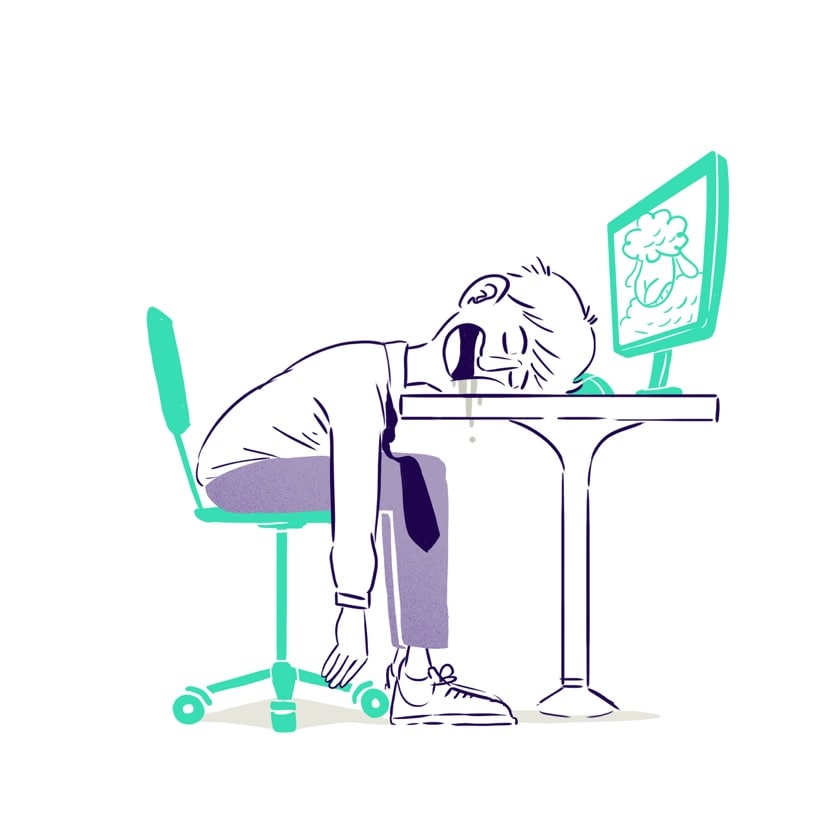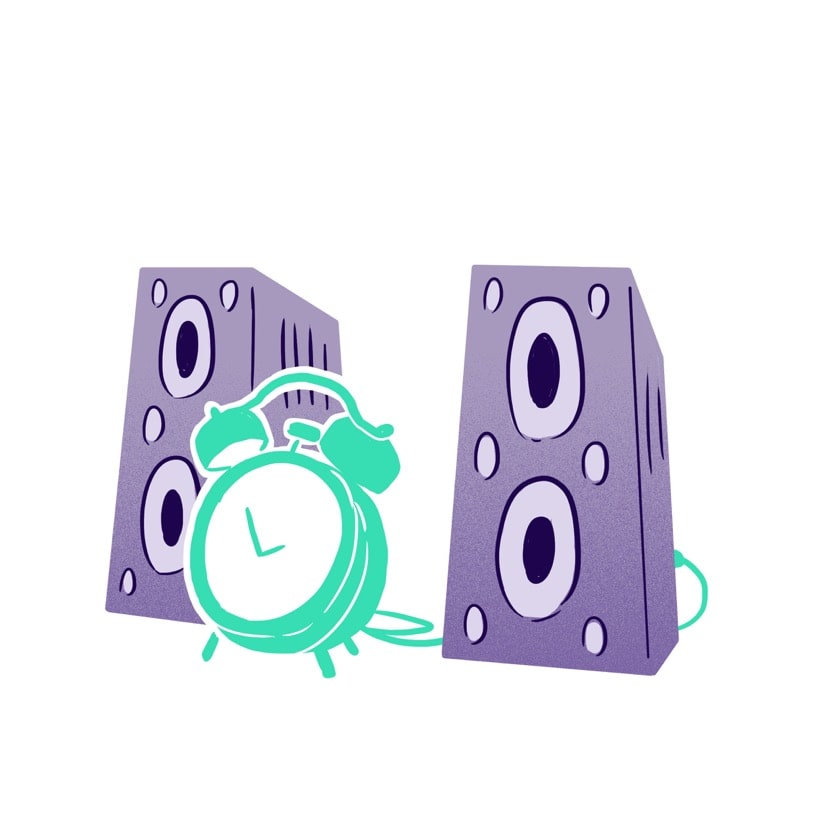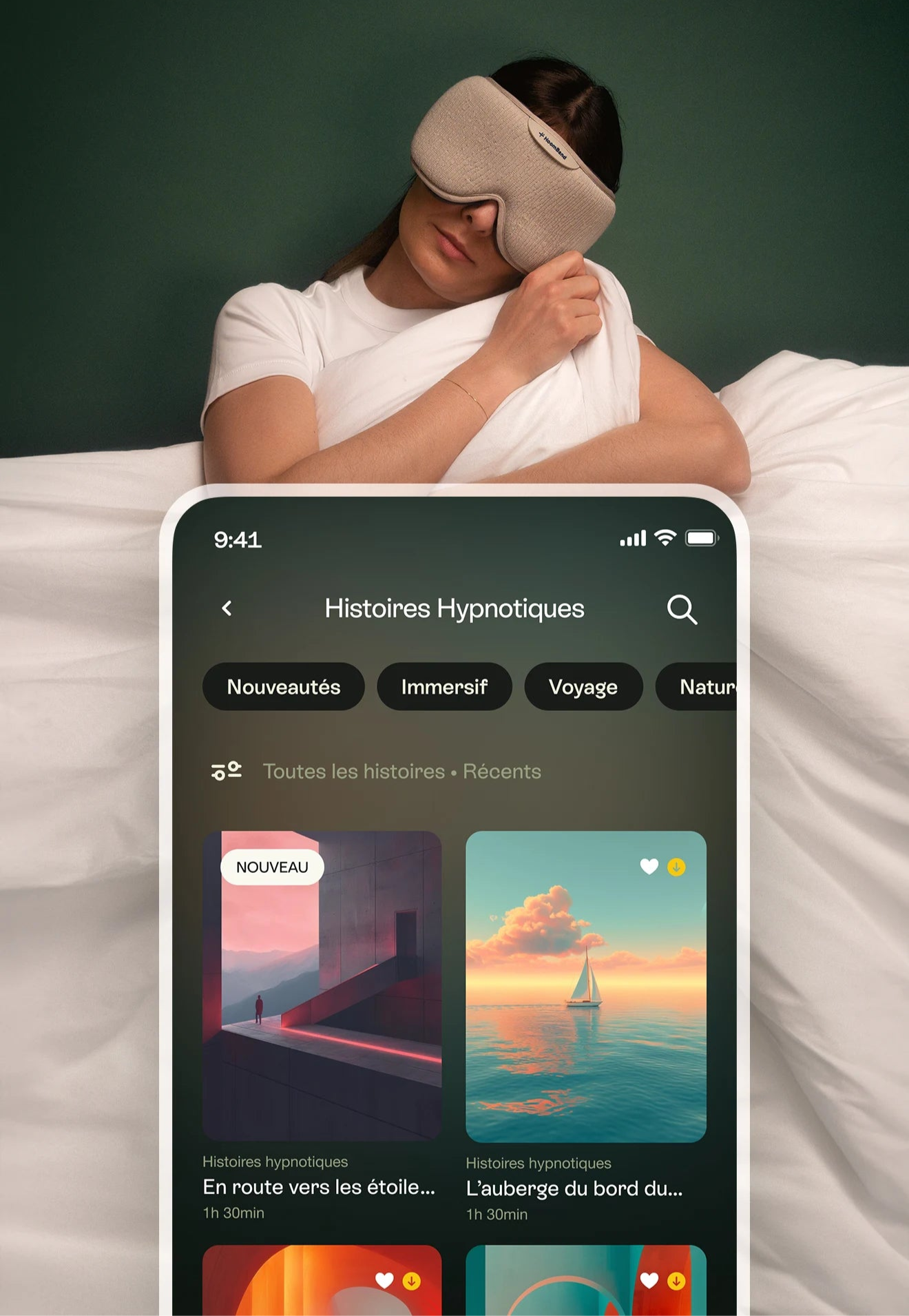Hypersomnia: omnipresent sleep for a “hyperpathology”!
Hypersomnia, or when sleep becomes tiring, that it abuses your time and your health. This maxim could have been taken from a fable by La Fontaine , but it is unfortunately the implacable observation that we face when hypersomnia rears its ugly head.
A pathology relatively unknown in its origins when it takes the form of idiopathic hypersomnia , this long-term "super" or "hyper" fatigue sails through the lives of those who suffer from it without ever worrying about the duration of its sleep cruise, nor the short stopovers of wakefulness. Of uncertain, even unknown origin, do we really know the causes of hypersomnia ?
This multifaceted sleep disorder has a home in several pathologies and numerous diagnoses. But what do we really know about hypersomnia? Here are some answers offered by Captain Sommeil , commander of the ship Hypersomnia !
What is hypersomnia?
According to INSERM 1 (National Institute of Health and Medical Research), hypersomnia is defined as a neurological disorder characterized by a state of significant fatigue and an excessive need for sleep . It also results in numerous daytime sleepiness .
There are two types of hypersomnia :
- Primary hypersomnia (or central hypersomnia ): these are the rarest, and their causes are not always known. There are 3 forms:
- idiopathic hypersomnia
- narcoleptic hypersomnia
- recurrent hypersomnia or Kleine-Levin syndrome
- Secondary hypersomnia : these are the most frequent, often the consequence of another phenomenon (fatigue, pathologies, trauma, psychological disorders, taking narcotic substances, etc.)
Generally, a person is considered hypersomniac when they sleep more than 11 hours a day, which is quite a sleep cruise!

Hypersomnia in a few figures
Hypersomnia is a rare condition and, as such, is difficult to quantify. However, the prevalence of hypersomnia is estimated at between 4 and 6% of the population 2 in its most common form (secondary hypersomnias, e.g., psychiatric hypersomnia ).
Primary hypersomnias are much rarer, particularly idiopathic hypersomnia . The latter affects 1 to 5 people per 10,000 (1-5/10,000) 3 when it is accompanied by an increase in sleep duration (up to 10 hours), which is, for example, 5 times less than the prevalence of narcolepsy . When it is not accompanied by an increase in sleep duration, it is even rarer, with a prevalence of around 1 per 100,000 4 .
Idiopathic hypersomnia is thought to occur between the ages of 20 and 30 and affects both men and women. However, there is very little data to quantify hypersomnia further.
What causes hypersomnia?
Secondary hypersomnia
They affect the majority of us and, unlike primary hypersomnia, the causes of secondary hypersomnia are identifiable. They can affect anyone at some point in their life, particularly when they result from a pathology or are secondary to a sleep disorder. Here are the main secondary hypersomnias :
- significant sleep deficit, physical fatigue due to other sleep disorders (narcolepsy, sleep apnea , restless legs syndrome)
- psychiatric disorders : depression , dysthymia, bipolarity, etc.
- neurological diseases (neurodegeneration, trauma)
- infectious diseases (Epstein-Barr virus, Guillain-Barré syndrome)
- substance use : hypnotic or sedative drug abuse, sudden discontinuation of stimulants, toxic organic solvents, etc.
- endocrine or metabolic diseases : diabetes, hypothyroidism, pancreatic or renal insufficiency, etc.
- cancers
Primary hypersomnia
For this type of hypersomnia, the causes are not sufficiently understood . Primary hypersomnia is not the consequence of an illness, a psychiatric disorder or behavior.
However, it is assumed that a malfunction of certain arousal systems could be the cause. In the case of idiopathic hypersomnia, it would seem that 20 to 30% of cases follow a family history 5 .
As we can see here, central (or primary) hypersomnias are still very mysterious in their origins, perhaps even more so than certain other sleep disorders , giving this sleep cruise an almost supernatural character! There are in fact phenomena that science and medicine cannot yet fully explain.
Symptoms of Hypersomnia
The symptoms of hypersomnia are quite characteristic, even if they are found in other pathologies. Here are the main symptoms common to the different types of hypersomnia:
- intense fatigue, feeling of exhaustion : urgent need to sleep, which can be temporary or constant depending on the type of hypersomnia
- excessive daytime sleepiness
- long sleep : lengthening of sleep duration
- difficulty waking up : “sleep drunkenness” syndrome
- daytime hypovigilance
Idiopathic hypersomnia has specific characteristics:
- excessive and constant daytime sleepiness
- normal or increased nighttime sleep without abnormality, but not restorative
- very difficult to wake up : inertia and/or sleep drunkenness
- long, unrestful naps
In the case of recurrent hypersomnia/Kleine-Levin syndrome , the characteristics are as follows:
- recurring episodes lasting several days
- cognitive behavioral disorders
- 15 to 20 hours of sleep per day, for several days, even several weeks
In narcolepsy , which is also considered a central hypersomnia, symptoms of excessive fatigue and prolonged sleep time may also occur, but it is mainly characterized by cataplexy (loss of muscle tone).
How can hypersomnia be diagnosed?
Hypersomnia is diagnosed primarily through a medical interview, as well as a clinical and psychological examination. A diagnosis of exclusion is then carried out, meaning that other possible causes of hypersomnolence are eliminated (chronic fatigue, overwork, phase shift, use of hypnotic or sedative drugs, withdrawal from stimulant drugs, etc.).
Idiopathic hypersomnia is the most difficult to diagnose. Following this in-depth interview, after eliminating other possible causes of drowsiness and chronic fatigue syndrome , it is necessary to recognize and characterize the excess sleep. The doctor can then refer the patient to various tests:
- MRI and/or CT scan
- actimetry (bracelet-type device for measuring sleep and wake rhythms)
- sleep diary (to be completed daily by the patient)
- polysomnography (complete analysis of a sleep recording made in the laboratory, using electrodes)
- iterative daytime sleep latency tests
For certain secondary hypersomnias, additional analyses (brain imaging, biology) may be necessary in order to characterize them.
These days, it's quite easy to "self-diagnose" sleepiness by taking an online test 6 on specialized websites or blogs. The answers to the questions easily determine problems of excessive daytime sleepiness using the Epworth scale . Don't hesitate to climb this scale to find out more in case of fatigue or unusual sleepiness!
For all practical purposes, Captain Sommeil , commander of the ship Hypersomnia , informs the wisest among us (not to mention the oldest!) that excessive daytime sleepiness that is beginning to appear in the elderly should alert them (or those around them). Indeed, a recent study 7 highlights that this sleepiness could be a precursor to chronic diseases, with "a risk of diabetes or high blood pressure multiplied by 2.3" and "a risk of cancer multiplied by 2". It is therefore advisable to monitor the sleep of our glorious elders (sailors)!

What treatments are there for hypersomnia?
We do not know how to treat hypersomnia ; there are only symptomatic treatments to reduce its effects on patients. The difficulty in diagnosing certain central hypersomnias (idiopathic hypersomnia) and the very delicate understanding of the medications associated with them mean that the treatment of hypersomnia, as a rare disease, is essentially carried out by " Narcolepsy and Rare Hypersomnia Reference and Competence Centers ".
Treatment of symptoms is essentially medicinal:
- for daytime sleepiness: taking stimulants the day before ( modafinil , methylphenidate, amphetamines)
- for Kleine-Levin syndrome: lithium, valproate, corticosteroids or treatment for behavioral disorders
- for narcoleptic hypersomnia: sodium oxybate, antidepressants, selective serotonin reuptake inhibitors, pitolisant
Of course, drug treatments carry risks of side effects. On the other hand, when the patient suffers from psychiatric hypersomnia , it is extremely difficult to treat it because some antidepressants themselves cause sleep disturbances!
Furthermore, in the case of idiopathic hypersomnia, waking stimulants have no positive effect on waking inertia ("wake-up drunkenness").
In all cases, therapeutic education is essential. Knowing your illness, maintaining a healthy lifestyle (limiting alcohol consumption, engaging in regular physical activity, etc.), and establishing "sleep rituals" (fixed times for naps, going to bed, and getting up) are all daily habits that can help relieve the symptoms of hypersomnia.
However, progress in identifying the causes of this disease and the therapeutic advances that would result from it are eagerly awaited in order to make the sleep cruise experience a little (or even a lot) less stressful! So remember to fill out the "sleep" book before disembarking!
To illustrate the point on the subject of hypersomnia, here is a video from the "Neuroscience Education Institute" which summarizes the ins and outs of this sleep disorder.
Sources:
[1] and [4] Hypersomnia and narcolepsy: when sleeping too much is pathological , “INSERM” website, September 2017 [2] Hypersomnia , Y. Dauvilliers, A. Buguet, “ Dialogues in Clinical Neuroscience ”, December 2005 [3] Idiopathic hypersomnia , “Orphanet” website, July 2020 [5] Idiopathic hypersomnia , “Fondation Sommeil” website, 2020 [6] Do you suffer from sleep disorders?, “Fondation Sommeil” website, 2020 [7] Hypersomnolence is a Significant Predictor of New Medical Conditions Among Elderly People in a Longitudinal Study of the General Population , Maurice M. Ohayon, Shannon Sullivan et al, “ Neurology ”, April 2020


